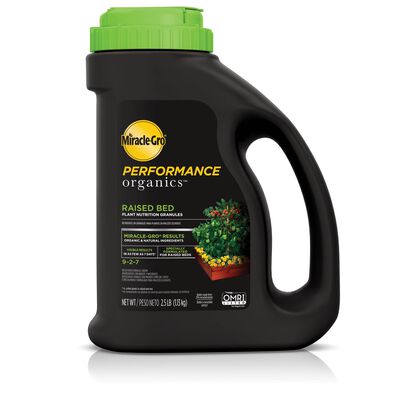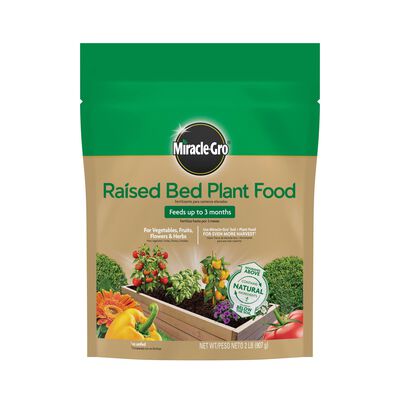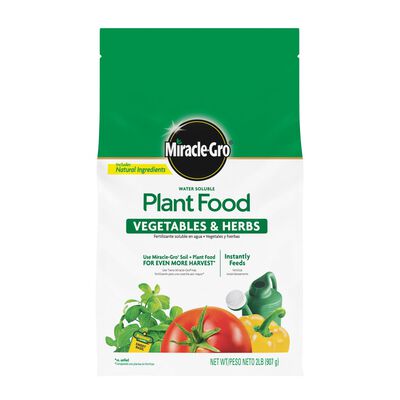
Plant the Perfect Pantry
Easy steps for the best fruit, herb, and vegetable garden.
There’s nothing quite like walking to your own backyard to snack straight from your garden or grab that beautifully ripe ingredient to perfect a dish. However, when planting a garden, planning everything out at the start of spring can become a bit overwhelming if you don’t know where to begin. But when it comes to fruit-, herb- and vegetable-garden planting, some light planning and preparation can be beneficial to ensure your garden grows great all season long.
Choosing the Perfect Location
Whether you choose to grow your garden in raised beds, an in-ground gardening plot, or out on your patio in containers, you’ll want to make sure that area receives at least 6-8 hours of sunlight a day, or at least 4 hours for root vegetables. If you decide to start a brand new garden plot in your chosen sunny spot, a good size to aim for with a beginner garden is around 6’x6’. This will generally provide plenty of space to grow, but not too much area as to overwhelm your growing endeavors.
It’s also important to be close to a water source. Fruits, herbs, and vegetables require regular watering once the weather heats up, so being within reach of a hose or nearby sink will quickly come in handy. Wherever you choose to plant, you’ll also want to ensure the soil is loose and well-draining. Soil that drains poorly can cause water to sit puddled at the roots of plants, potentially leading to root rot.

Picking the Right Ingredients
When you’re first starting your outdoor gardening research, you may find yourself feeling a little overwhelmed with the large amount of plant options to choose from. A great place to start when you’re beginning to pick plants for your fruit, herb, and vegetable gardens, is just by thinking of what you like to eat. What do you find yourself always buying from the supermarket? What fruits are you forever craving in the summertime? Once you have some ideas in mind, you want to look up your location’s plant hardiness zone next to see how well a plant grows in your area.
If you are hoping for tasty harvests from spring to fall, you also want to pay attention to when your fruits, herbs, and vegetables will be ready for picking. Do a little research to see if your selected plants will be harvested only once or if they will continue to produce crops throughout the whole season. You can also consider successive growing, which means picking plants that grow during different seasons, giving you plenty of variety from spring to fall.
When choosing plants, it’s also a great option to jump start growing with hearty, already-established plants. This way, you know you’re beginning with plants that already arrive happy, healthy, and ready to grow.
Plan Out Planting
Whether you’re new to gardening or a seasoned grower, utilizing some sort of gardening journal can help tremendously when forming your garden planting ideas. Not only is it great to have your notes and plant research in one place, but you can also use a page to sketch out the gardening plot you’re working with so you can plan out where you want to place your plants.
Before you start plugging plants into the drawing, you’ll want to decide on the perfect amount of plants to include. When you’re first starting out, it can be best practice to start a little smaller, so you don’t become overwhelmed with the upkeep or amount of crops. Consider how much food from the harvest you or your family will be able to realistically consume, so you won’t need to deal with food spoiling or rotting. Having 1 tomato plant vs. 3 tomato plants could very well give you just enough of what you need to be satisfied during the growing season.
Once you have a number in mind, take note of the size of your plot, and space out plants based on their recommended distance in your garden journal plot drawing. We recommend using a pencil as there could be some potential rearranging to make things just right!

Get Planting
Once you’ve picked the perfect spot, selected which plants to take care of, and planned out where everything will go, all that’s left to do is plant! Prepare the soil as needed, then simply begin planting based on how you laid it out in your garden journal. As you plant, take note in your journal of the planting date of each variety. This will help you stay organized for the following growing season and have a better idea on how your plant should be growing and when.
As plants mature, you can continue to use your garden journal to track growth progress, along with any information or experiences on plant care, maintenance, fertilizing, supplies or tools used during the growing season, and the number of crops you grew and the harvest or yield. This can all come in handy for next year when it’s time to start the planning and planting process all over again.
What to Do If You Still Have Questions?
If you still have questions about how to best plan out your fruit, herb, or vegetable garden, we’re here to help. Chat live with a Greendigs team member on our website or shoot us an email at [email protected].


